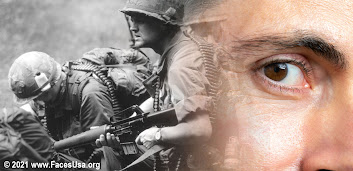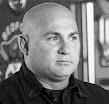Hitting Cancer Below the Belt Inside the Fire House - By: Mindy Conklin
An internal fire has ignited and we are sounding the alarm. According to the National Cancer Institute,
the rate of colorectal cancer has doubled in the under 50 year old population.[1] A 2021 study predicts this trend may continue into the foreseeable future with colorectal cancer becoming the leading cancer-related death in people between 20-49 years of age by the year 2040. [2]
Pouring gasoline on this cancerous fire is the risk of toxic exposure for firefighters. In 2010, the National Institute for Occupational Safety and Health (NIOSH) assessed nearly 30,000 fire fighters across the country to explore the possible connection between their work and the development of cancer. The study was a collaborative effort, which also included researchers at the National Cancer Institute and the University of California at Davis Department of Public Health Sciences. Their findings revealed firefighters were likely to experience more cancer, and die more frequently from those cancers, than the general U.S. population. The most prominent cancers were digestive (e.g. colorectal), respiratory, and urinary cancers. [3]
Smaller studies have also revealed firefighters to be at higher than average risk of developing cancer. So what can be done? Hitting Cancer Below the Belt (HCB2) believes it all starts with awareness and offering education to enhance that understanding while delivering services to increase proactive health behaviors. HCB2 has an array of educational assets to attract the attention of community members that includes podcasts, short videos, presentations, appearances with the inflatable colon, and social media messages. We direct our services towards supporting community members susceptible to or at a higher risk of a cancer diagnosis - firefighters included. The news that colorectal cancer is on the rise is one that we can do something about!
RESCUE SERVICE FACES RISE IN CANCER RATES
by: William J. Boger / President, Local 1568
Cancer is a very real and pervasive enemy to firefighters. The fires we used to fight were made of natural products like wood, leather and natural cloth fibers. Now, the fires we fight are filled with carcinogenic mixtures of plastics, synthetics and other chemicals. While we do a good job of protecting ourselves with gear, breathing apparatus and decontamination procedures, the toxins are unfortunately still absorbed into our bodies. In fact, cancer is now the leading cause of firefighter deaths and 66% of firefighter deaths between 2002 and 2019 were from cancer. According to research by the CDC/National Institute for Occupational Health and Safety (NIOSH), firefighters have a 9 percent higher risk of being diagnosed with cancer and a 14 percent higher risk of dying from cancer than the general population.
HENRICO PROFESSIONAL FIREFIGHTERS ASSOCIATION LOCAL 1568 - IAFF RICHMOND, VA |
HCB2 is nonprofit organization based in Richmond, Virginia. We are motivated to create environments where cancer is challenged to survive. It’s our purpose to see, listen, and serve in the effort to defeat colorectal cancer. Firefighters, we are coming with our hoses! Please feel free to reach out to us at
hcb2.org or
info@hcb2.org for further discussion and collaboration.
TOXINS FROM BURNING MATERIALS & COLORECTAL CANCER SCREENING By: Robert Bard MD DABR FALSM (Sr. Medical Editor) www.drrobertbard.com

An internal fire has ignited and we are sounding the alarm. The National Cancer Institute notes the rate of colorectal cancer has doubled in the under 50 year old population. [4] A 2021 study predicts this trend may continue into the foreseeable future with colorectal cancer becoming the leading cancer-related death in people between 20-49 years of age by the year 2040. [5] Pouring gasoline on this cancerous fire is the risk of toxic exposure for firefighters. In 2010, the National Institute for Occupational Safety and Health (NIOSH) assessed nearly 30,000 fire fighters across the country to explore the possible connection between their work and the development of cancer. The study was a collaborative effort, which also included researchers at the National Cancer Institute and the University of California at Davis Department of Public Health Sciences. Their findings revealed firefighters were likely to experience more cancer, and die more frequently from those cancers, than the general U.S. population. The most prominent cancers were digestive (e.g. colorectal), respiratory, and urinary cancers. [6]
TOXINS AND CANCER
Major illnesses from inhaling smoke include: loss of immunity to respiratory tract infection, airway sensitization (chronic cough), lung damage, sinus trouble, problems with peripheral circulation, heart and neurological/psychological disorders. From the New York Telephone fire in 1975 the most common cancers were in the larynx, liver, skin, throat and brain that were detected through the years 1980 to the present. The remaining survivors are still developing cancers to this day. Many 9/11 first responders still suffer with chronic coughing episodes.
Anyone who received a letter from the Department of Health alerting them to the high mercury, arsenic or lead level in a recent blood or urine test knows that this is a wakeup call to further evaluate the problem. However, most of the State Health standards were based on toxicity to the unborn fetus in pregnant mothers. For some reason, the early blood test abnormalities do not always match the results of the 24 hour urine collection which is supposedly more accurate. Many physicians today accept a high blood mercury level as a sign of health from greater consumption of fish.
Another unknown is the combination of toxins with trauma and particulate matter at high rise disasters. Many cancers and chronic diseases do not manifest fully until months, years and even decades after the initial body insult as demonstrated by the 1975 NY Telephone Company conflagration and the Cancer Registry for the 911 attack aftermaths still revealing a significant incidence of skin, lung and prostate cancers 15+ years later. In fact, the most common tumors recorded after 911 are; Basal Cell Skin Cancer, Squamous Cell Skin Cancer and Malignant Melanoma. Lung Cancer and Prostate Cancers are 4th and 5th respectively. Other statistical centers have collectively noted the incidence as: Prostate 13.7% Skin 8.4% Colon 7.1% Bladder 6.9% and testicular 5.5% (lung and stomach have lower incidence to date). Our body filters toxins by the skin, lungs, kidneys, gastrointestinal tract and liver. This trapped reservoir of irritants may be released over many years increasing the carcinogenic on the colon and rectal tissues.
Since colorectal cancer is mostly silent, how do we find it? Colonoscopy is recommended for those over 50 but this is an invasive test. CT colonoscopy is useful to find a tumor however the tissue sampling cannot be performed. Modern diagnostic imaging allows non biopsy analysis of all skin cancers, most prostate tumors and some colo-rectal malignancies. Blood flow Doppler measurements predict which tumors are aggressive and which may be watched. Many cancers are tracked by CT, MRI and PET/CT isotope imaging. Endorectal 4D sonograms are mostly used in Europe for staging and biopsy even though the resolution of the probe in contact with the bowel wall provides superior imaging. Ultrasound, photo-optical and laser MRI guided focal treatments permit patients to handle the problem with new minimally invasive procedures.
A 15 minute endoscopy ultrasound probe scan reveals the tumor size and location. The 3D Doppler blood flow offers insight into the aggressive nature and likelihood of metastases.[7] 4D Volumetric imaging shows penetration through the bowel wall and some metastatic lymph nodes which is critical for surgical and radiation treatment planning. Metastatic spread to distant organs such as the liver, bones and lymph nodes is detected by radiologic imaging. Often a cancer survivor feels a lump in the neck, groin or under the arm and may have their concern addressed by portable sonograms at their home if not available at their physician’s office. A cancer node and a benign fatty tumor are readily distinguished by general ultrasound units in experienced hands. [8] If the abnormal lymph node is suspicious, ultrasound guided fine needle aspiration (FNA) will accomplish what was previously a surgical excision, removal and pathologic sectioning. The ultrahigh resolution of lymph node sonography finds areas that the pathologists may miss since they are investigating a large mass of postoperative tissue specimen and may miss the true malignant focus if the sectioning of the nodes is too wide.
COLORECTAL SCREENING: The low rate of first responders over 50 getting checked for bowel tumors may be increased by a 5 minute skin scan looking for toxic “stars” in the dermal tissues. The “colon screening genetic markers” have a significant failure rate to date. A future study comparing dermatologic findings with colon and rectal tumors will shed more light on this non invasive clinical option.
ROBERT L. BARD, MD, PC, DABR, FASLMS
Advanced Imaging & Diagnostic Specialist & recipient of the 2020 nationally acclaimed Ellis Island Award for his lifetime achievement in advanced cancer diagnostic imaging. Dr. Bard co-founded the 9/11 CancerScan program to bring additional diagnostic support to all first responders from Ground Zero. His main practice in midtown, NYC (Bard Diagnostic Imaging - www.CancerScan.com)
REFERENCES
1. NCI. (2020). Why Is Colorectal Cancer Rising Rapidly among Young Adults? Retrieved from https://www.cancer.gov/news-events/cancer-currents-blog/2020/colorectal-cancer-risingyounger-adults.
2. Rahib, L., Wehner, M.R., Matrisian, L.M. et al. (2021). Estimated Projection of US Cancer Incidence and Death to 2040. JAMA Network Open, 4(4). Retrieved from https://jamanetwork.com/journals/jamanetworkopen/fullarticle/2778204.
3. CDC. (2016). Findings from a Study of Cancer Among U.S. Fire Fighters. Retrieved from https://www.cdc.gov/niosh/pgms/worknotify/pdfs/ff-cancer-factsheet-final-508.pdf.
4. NCI. (2020). Why Is Colorectal Cancer Rising Rapidly among Young Adults?Retrieved from https://www.cancer.gov/news-events/cancer-currents-blog/2020/colorectal-cancer-risingyounger-adults.
5. Rahib, L., Wehner, M.R., Matrisian, L.M. et al. (2021). Estimated Projection of US Cancer Incidence and Death to 2040. JAMA Network Open, 4(4). Retrieved from https://jamanetwork.com/journals/jamanetworkopen/fullarticle/2778204.
4. CDC. (2016). Findings from a Study of Cancer Among U.S. Fire Fighters. Retrieved from https://www.cdc.gov/niosh/pgms/worknotify/pdfs/ff-cancer-factsheet-final-508.pdf.
5. US Consumer Product Safety Commission Fact Sheet No 41:Plastics GPO889-731 1975
5. Wallace D: Toxic Fires in the Age of Plastics TH9446.P55W35 1990
6. Bard, Futterer (Eds.) Image Guided Prostate Cancer
Treatment Springer 2014
7. Bard (Ed.) Image
Guided Dermatologic Treatment Springer
2019
8. Bard (Ed.) Image Guided Covid-19 Lung Treatment Springer 2021











































